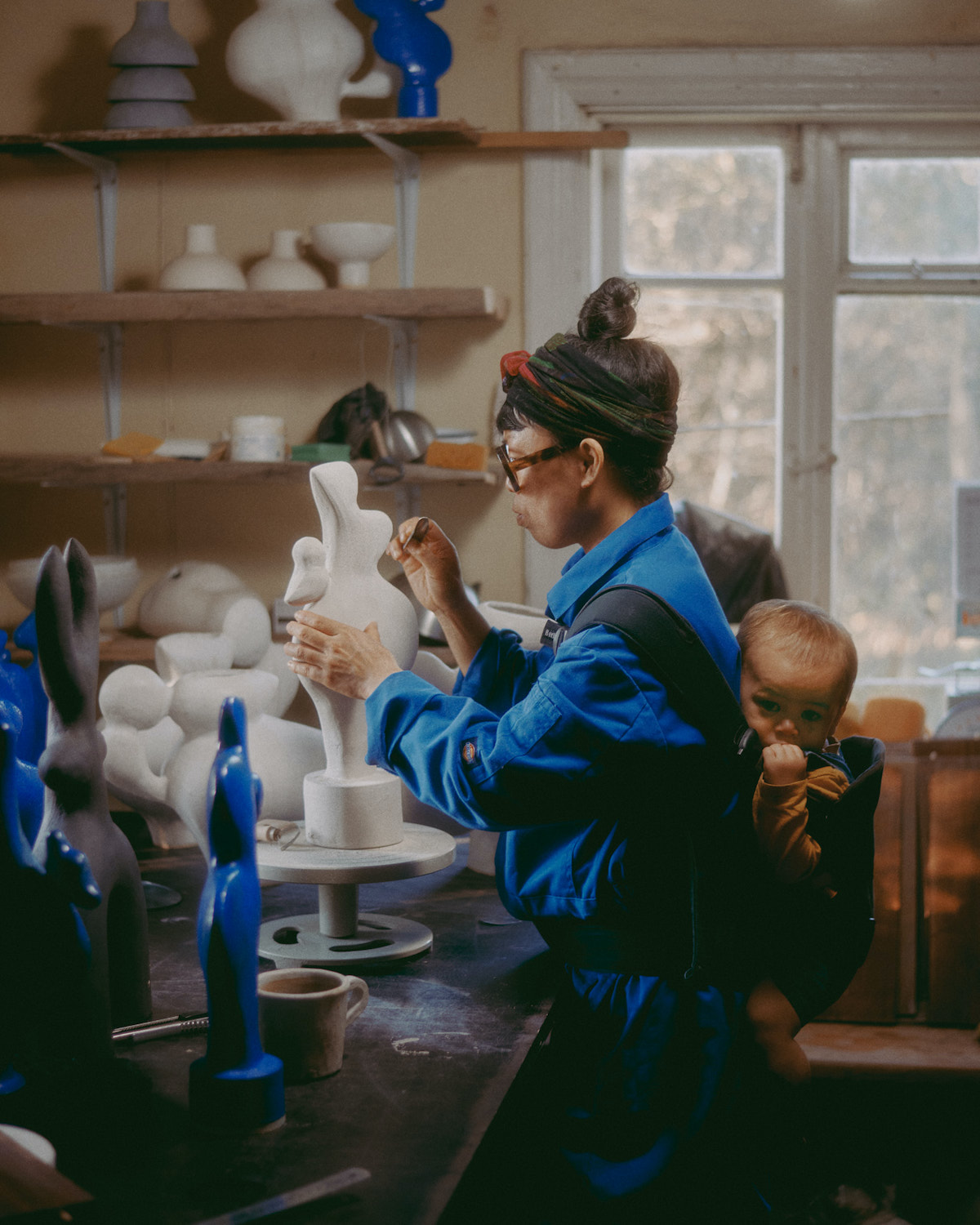Born in Osaka, Japan and graduated in Fine Art with First Class Honours from Central Saint Martins College of Art, Noe Kuremoto is a ceramic artist known for playful sculptural work. Her work merges fine art and design with her cultural heritage. Combining simplicity and sophistication, she hopes that, “every piece I make helps my children to see the world as a beautiful place.”
Continuing the Collectible Design Series by PAMONO X LARRY’S LIST, Noe Kuremoto shared about the top places she goes in London to get inspired, the artists who have inspired her the most, her experiences on commission of her Haniwa collection, and the most interesting thing about using clay as her material of expression.

9 Questions with Noe Kuremoto
How did you develop your own signature style?
I never think of style. Style is just a by-product of my art practice. I try to articulate a problem in the world I feel I want to offer some light even in my own small way. My sculpture is my response to the problem.
I see my art practice is a journey to strengthen my soul. If people want to join me, that’s fabulous. How can I aid the world even in my small insignificant way? I try to clear my vision of the world through drawing in the air using clay. I reflect a lot through the process of drawing and playing with clay. My sculpture is just my response to those problems. I like to really FEEL the sensation of my internal thinking and live truly with my sculpture beside me.


What do you think about the relationship between art and design?
It’s a completely different practice. Fine art has to have a higher purpose for humanity. Design belongs to commercial art sector. It does not mean one is more important than other. The world needs both.
How do you merge fine art, design and your cultural heritage into your creations?
I studied Fine Art at Central Saint Martins in the late 90s. My art practice is often my interpretation of Japanese ancient folk tales and tradition. So my cultural heritage is absolutely the heart of everything I do. I share the traditional Japanese view that sprits are everywhere, especially in nature. For me, the truth of our universe can be found in wilderness. My sculptures hopefully invite the spirit of nature into people’s homes in the simplest form as possible. It’s representative of my desire to make a deeper connection in a world that can often feel shallow. My work comes from my deep ocean of childhood memories; I hope every piece I make helps my children to see the world as a beautiful place.


Which modern or contemporary artists/designers have inspired you the most?
Oof! There are so many! Gordon Matta Clark, Sophie Calle, Vito Acconci, Joseph Beauys… ahh the list is endless!
Do you often visit galleries and museums to get inspired. Which are your top 3 places?
There are so many in London! With my children, Serpentine Gallery is nice as it’s in the middle of the Hyde park. I like doing a gallery tour on the Southbank too. It’s important to visit smaller independent galleries in East London as up-and-coming artists and private galleries need more support.

What are the most interesting and challenging parts about using clay as your material?
I love the simplicity of using clay as my main material. All I need is, my hands, clay, water, and fire. After centuries and centuries, this has never changed in the tradition of ceramics. Hmm… The challenging part for me is having 3 young children around in my studio while I work! [laughter] I really enjoy working with clay including the challenging part — of course firing can be challenging, but it’s part of a ceramist’s life.


Nowadays people discover a lot of creations digitally. When creating your works, do you consider how they would be perceived online, e.g. on Instagram or on platform like Pamono?
No. It never comes cross my mind while I am making. I am fully aware that the digital platform is a crucial part of today’s artistic practice though.

Have you worked on commissioning? Any memorable or interesting experiences?
Yes, I often work on a commission. I enjoy working closely with my private clients, especially when they have a deep bond with the meaning behind my collection. It often happens with my Haniwa collection. I often get a commission to make a personal Haniwa and I love that.
Haniwa are the traditional clay figures buried with the dead during the Kofun period in Japan, in the belief that the Haniwa would protect the souls in the after-life. My hope is that my Haniwa will protect our souls in this world.
What are your upcoming projects that we should look forward to?
I am working on my new exhibition in London and Rome after my maternity leave so stay tuned! The details will be posted on my Instgram and my website.

Check out Collectible Design Season on PAMONO
Related: Noe Kuremoto
Instagram: @noe_kuremoto_ceramics
Photographer: @kes_____





